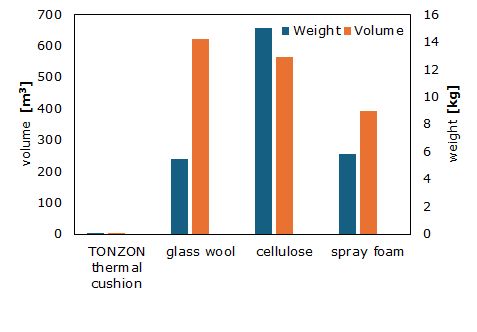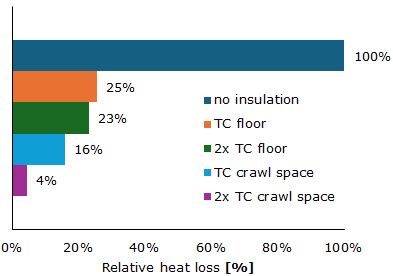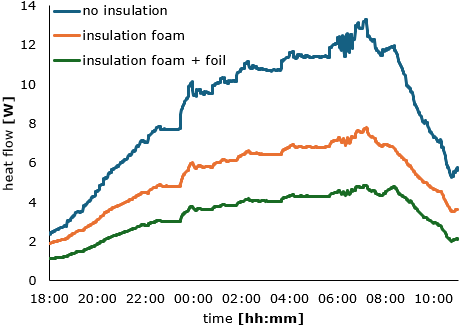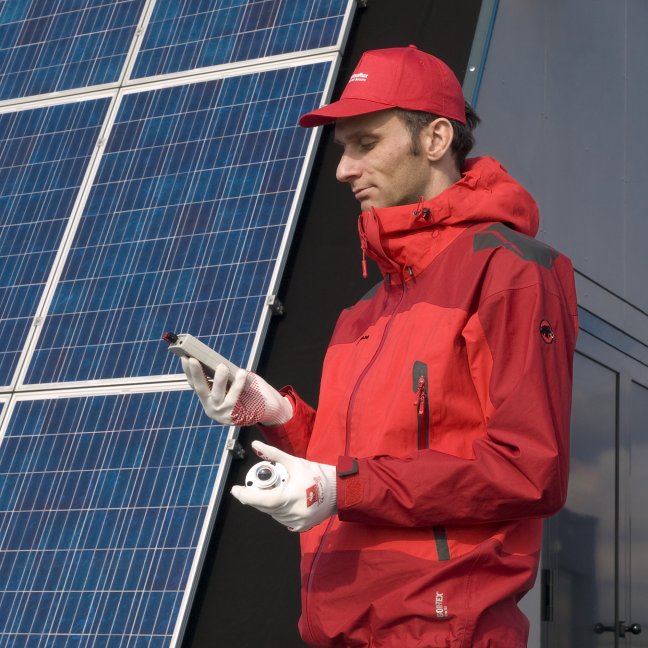Thermal insulation analysis using heat flux sensors
TONZON & Hukseflux have worked together to improve home insulation products even further. By using Hukseflux’s heat flux sensors, an accurate thermal image can be obtained regarding the value and direction of heat flow.
Read the full article here: Thermal insulation analysis using heat flux sensors (PDF)
Thermally insulate homes, increase thermal comfort
To reduce our carbon footprint, it becomes increasingly important to thermally insulate residential homes. Not only does this reduce the energy bill, but it also increases thermal comfort. A market leader in this domain is TONZON which manufactures innovative insulation solutions.
Heat loss in homes
There are various ways in which residential homes lose heat. From the components listed in Figure 1, radiative and conductive heat loss are most substantial regarding the effectiveness of insulation materials.

A unique design property of TONZON’s products is the ability to reduce radiative heat loss to near zero. This radiative heat transfer is described by:
Here, q is radiative heat transfer, ϵ the emissivity factor, and σ a constant. The temperature of the surface and surrounding air is given by T and T0. The direction of heat transfer is indicated by the sign of q. To minimise heat loss, TONZON uses materials with low emissivity properties.
Another important factor is the conductive heat loss that takes place due to direct contact of two substances that differ in temperature. The performance of insulation is evaluated using the R-value. This measure represents thermal resistance such that higher values indicate better insulating properties. The following equation can be used to calculate the R-value:
![]()
Here, ΔT is the temperature difference across the material and q the heat flux. A high heat flux intuitively indicates a low R-value, reflecting poor insulating properties and significant heat loss.
Higher R-values can be achieved by increasing volume (and thereby weight) of the insulating material. However, TONZON uses remarkably efficient designs that contain air as low thermal conductivity substance while also reducing radiative heat loss.
Floor insulation
Homeowners can significantly reduce their energy bill and increase thermal comfort by using TONZON’s thermal cushions, see Figure 2. These thermal cushions are designed to block radiative and conductive heat transfer to the crawl space and foundation walls.

and ensure thermal comfort through warmer floors and heat retention.
The material efficiency of TONZON’s thermal cushions compared to other common insulation materials is shown in Figure 3.

R-value of 7 (m2·K)/W. The blue and orange bar show the volume and
weight for the necessary amount of each insulation material.
Heat flux sensors can help to analyse the complex heat transfer profile of this method of insulation. For example, a study done by TONZON measured the heat flux above and below the thermal cushions in scenarios with and without floor heating.
Results in Figure 4 show that the heat flux compared to floors without thermal cushions is reduced by around 84% or 96% when using one or two layers of thermal cushions respectively.

a floor with no insulation (blue) and one or two thermal cushions.
Heat flux sensors measured heat transfer towards the floor and crawl space.
Pipe insulation
Another application of TONZON’s innovative insulation products is piping insulation. TONZON’s reflective pipe wrap insulation foil overcomes the inefficiencies of traditional foam insulation and reduces heat loss through radiation from your central heating system. An internal study analysed the heat flux under three different configurations: no piping insulation and piping insulation with and without the reflective foil. Due to the curved surface, flexible heat flux sensors from the FHF05 series were used.
The capability of reflective pipe wrap insulation foil to block the radiative heat transfer is shown in Figure 5. Compared to piping with no insulation, the heat loss can be reduced by 62% when using TONZON’s reflective foil. Therefore, this easy-to-apply solution is an efficient insulation method that can significantly reduce energy consumption.

configurations. Adding reflective foil lowers the heat flow even further.
Heat flux sensors for thermal analysis of insulation materials
The complex thermal image surrounding insulation materials can be analysed using heat flux sensors. Not only do they measure the heat loss, also the direction of heat transfer can be determined using heat flux sensors. If you would like a more personalised and free advice for your application, contact our experts.
Read the full article here: Thermal insulation analysis using heat flux sensors (PDF)








